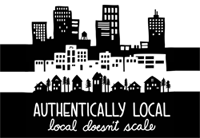This is part of the essay “Ravenna Park (Seattle)“, appearing here thanks to HistoryLink.org and author Peter Blecha, under a Creative Commons license.
[If you’re new to the series, you can start with Part 1 here.]
Original Beauty and Natural Wonders
In the wake of the great economic crash of 1893, the Becks’ Seattle Female College was shuttered, but they remained committed to their 60-acre park. Beck fenced it in between 15th Avenue NE eastward to 20th Avenue NE, and over the ensuing years he improved the property by carving out better trails. One was a path to the largest sulfur spring (sometimes known as the “Petroleum Spring,” located at the center of the park, below and just east of today’s 20th Avenue NE bridge), which he had wisely recast as the “Wood Nymphs’ Well.” He also built a teahouse, a 40- by 90-foot pavilion (“Ye Merrie Makers’ Inn”), picnic shelters, wading ponds, and an area called Rhododendron Way where rows of shrubs featuring the state flower were planted.
The park was touted as “a safe, clean, and beautiful place for women and children — a deputy sheriff in charge” (Beck, booklet, 1903). By 1902 it had become so popular that 10,000 visitors reportedly paid the 25-cent admission fee. Beck soon published a booklet that grandly sang the charms of his little piece of paradise: “Ravenna Park, with its standing or fallen giant trees; moss and fern covered canyons; dashing trout streams, preserves in quaint uniqueness every beauty of the wonderful Puget Sound forest, and is Seattle’s only forest unshorn by axe and fire of original beauty and noblest and grandest characteristics” (Beck, booklet, 1903).
For her part, Louise maintained a keen interest in music. Indeed, it would seem that during her earlier musical activities back east she made the acquaintance of more than a few major talents of the day, because when touring stars — including the famed Polish composer Ignacy Jan Paderewski, the Austrian violinist Fritz Kreisler, and British pianist Harold Bauer — came through town they invariably visited the park and were treated to the “hospitality of her Ravenna Park home” (Seattle Post-Intelligencer, 1928).
Although prominent Seattle historian Clarence Bagley (1843-1932) snarked in 1929 that the park was merely a “dark, dank, dismal hole in the ground” (Manning), many other visitors were awestruck by the outsized flora and the fish-rich Ravenna Creek that flowed through the park (and the adjacent Cowen Park). Some considered it one of Seattle’s prime attractions, on a par with others of America’s treasures: “Like natural wonders such as Niagara Falls, Yosemite, and the Grand Canyon, Ravenna Park offered a pilgrimage to the sublime, the contemplative, the spiritual, the terrifying” (Duncan).
Next week: Big Tree Park and Cowen Park
______________________
Sources:
W. W. Beck, Ravenna Park — ‘Im Walde,’ (1903), Peter Blecha collection, Seattle; W. W. Beck, Ravenna Park — ‘Im Walde,’ 16-page postcard booklet, undated, in Peter Blecha collection; W. W. Beck, Ravenna Park (ca. 1909), Peter Blecha collection; “Ravenna Park Guide,” brochure, 1909, Peter Blecha collection; “Ravenna Or Big Tree Park: It is Famous = “Nature’s Exposition,” postcard, 1909, Peter Blecha collection; Harvey Manning, Winter Walks and Hikes (Seattle: Mountaineers Books, 2002), 42; Betty McDonald, Anybody Can Do Anything (Philadelphia / New York: J. B. Lippincott Co, 1950), 129-130; Paula Becker, “Time Traveling The Roosevelt District With Betty Macdonald,” Seattlepress.com website accessed July 13, 2010 (http://seattlepress.com/article-9455.html); “One of Ravenna’s Giant Trees Christened ‘Paderewski,'” Interlaken, February 8, 1908, p. 1; Sophie Frye Bass, When Seattle Was A Village (Seattle: Lowman & Hanford Co., 1947), 106-108: David Buerge, “Indian Lake Washington,” Seattle Weekly, August 1-7, 1984; Seattle Polk City Directory (1901-1934); Directory of the National Society of the Daughters of the American Revolution (Washington D.C.: Memorial Continental Hall, 1911), 1340; “Mrs. L. C. Beck Funeral To Be Held Today: Woman Widely Known In Musical and Club Circles Is Mourned By Seattle Friends,” Seattle Post-Intelligencer, July 9, 1928, p. 13; Kate C. Duncan 1001 Curious Things: Tales from Ye Olde Curiosity Shop (Seattle: University of Washington Press, 2000), 73-78; Andrea Casadio, email to Peter Blecha, January 30, 2008; “No Finer Site: The University of Washington’s Early Years On Union Bay,” Web exhibition, University of Washington Libraries website accessed August 19, 2010 (http://lib.washington.edu/exhibits/site/); HistoryLink.org Online Encyclopedia of Washington State History, “Seattle’s Ravenna Park Bridge is constructed in 1913” (by Priscilla Long), and “WPA builds Cowen Park Bridge in Seattle’s Ravenna neighborhood in 1936” (by Priscilla Long), and “John Olmsted arrives in Seattle to design city parks on April 30, 1903” (by David Williams and Walt Crowley), and “David Thomas Denny (1832-1903)” (by David Wilma), http://www.historylink.org/ (accessed August 1, 2010); Esther Campbell, Bagpipes in the Woodwind Section (Seattle: Seattle Symphony Women’s Association, 1978), 9; William Arnold, “The Great Mystery of Ravenna Park,” Seattle Post-Intelligencer, Northwest Today section, December 17, 1972, pp. 8-9; Steve Cronin, “Ravenna Park’s Famous Trees Vanished Furtively,” UW Daily, May 25, 1977, p. 3; James Bush, “Remembering William W. Beck: The Father of Ravenna Park,” The Seattle Sun, August 2003, The Seattle Sun website accessed August 25, 2010 (http://parkprojects.com/2003news/0308aug/hisbeck.html); Mary R. Watson, travel diary (handwritten), 1910, portion accessed on eBay, December 2006, copy in possession of Peter Blecha; Russ Hanbey, “1916 Seattle was a Hotbed of Sin When 2 Officers Were Killed,” The Seattle Times, February 6, 2010 (http://seattletimes.nwsource.com); and Peter Blecha archives.








Stay Connected